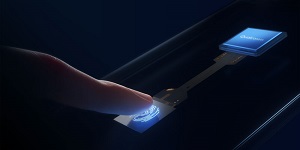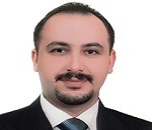
Sensors 2021

Theme: GIS And Remote Sensing Techniques For Future Use
Meetings International presents a conference for the Sensors and Electronic Instrumentation Industry which is scheduled to be held from April 20-21, 2022 in Miami, USA. The objective of the conference is to introduce and encourage new aspects and novel innovative technologies and advancement from the global and local business professionals, scientists, professors, directors of associations, delegates, industrialists, researchers, and students from the field sensors and electronic instrumentation, to interchange information on their latest research progress and with a theme "GIS And Remote Sensing Techniques For Future Use" to cover almost all aspects and fields of sensors and electronic instrumentation.
Session 1: Acoustic wave sensors
Acoustic wave sensors have been in business use for more than 60 years. The broadcast communications industry is the biggest customer, representing ~3 billion acoustic wave channels yearly, essentially in versatile PDAs and base stations. These are normally surface acoustic wave gadgets and go as band pass channels in the radio recurrence and middle recurrence areas of the handset hardware. Acoustic wave sensors are so named because their location instrument is a mechanical, or acoustic, wave. As the acoustic wave spreads through outside of the material, any progressions to the attributes of the proliferation way affect the speed as well as the quality of the wave. Changes in speed can be checked by estimating the recurrence or stage attributes of the sensor and after then be able to be connected to the relating physical amount being estimated.
Electronic Sensors | Sensors Congress | Wave Sensors | Remote Sensors | Bio Sensors | Radiation Sensors | International Meet 2021 |
Session 2 : Radiation sensor
A radiation sensor is a gadget for evaluating atomic, electromagnetic, or light radiation. An Atomic radiation locater sees atomic radiation by evaluating the spread of ionizing radiation of alpha particles, beta particles, and gamma transmit. An atomic radiation identifier that includes two basic parts: the arranging hardware and the Geiger tube. The Geiger tube is filled up with low-pressure idle gas like helium, argon, or neon. In the event that radioactive radiation happens and the dormant gas is ionized. Inside the Geiger tube, an anode chooses the proportion of ionized particles mathematically creates proportions of radiation. The radioactivity evaluation is then showed up on the LCD screen of the Geiger counter or atomic radiation locater.
Electronic Sensors | Sensors Congress | Radiation Sensors | Remote Sensors | Bio Sensors | |Wave Sensors | International Meet 2021 |
Session 3: Biosensor
A Biosensor is an expository gadget, utilized for the identification of a synthetic substance, which joins a natural segment with a physicochemical detector. The delicate organic component, for example, tissue, microorganisms, organelles, cell receptors, proteins, antibodies, nucleic acids, and so forth,is a naturally determined material that communicates with, ties with, or perceives the analyte under examination. The biosensor per user gadget interfaces with the related hardware or sign processors that are liable for the showcase of the outcomes in an easy-to-understand way. Sometimes it represents the most costly aspect of the sensor gadget which is conceivable to create an easy-to-use show that incorporates transducer and delicate component (holographic sensor). The per user are generally handcrafted and are made to suit the distinctive working standards of biosensors.
Electronic Sensors | Sensors Congress | Bio Sensors | Remote Sensors | Radiation Sensors |Wave Sensors | International Meet 2021 |
Session 4: Fiber Optic Sensor
A fiber-optic sensor is a sensor that utilizes optical fiber either as the detecting component ("inborn sensors"), or as a method for handing-off signs from a far-off sensor to the gadgets that convert signs ("outward sensors"). Fibers have many uses in remote sensing. Depending on the application, fiber may be used because of its small size, or because no electrical power is needed at the remote location, or because many sensors can be multiplexed along the length of fiber by using light wavelength shift for each sensor, or by sensing the time delay as light passes along the fiber through each sensor. Fiber optic sensors are also immune to electromagnetic interference and do not conduct electricity so they can be used in places where there is high voltage electricity or flammable material such as jet fuel. Fiber-optic sensors can be designed to withstand high temperatures as well.
Electronic Sensors | Sensors Congress | Fibre optic Sensors | Remote Sensors | Radiation Sensors |Wave Sensors | International Meet 2021 |
Session 5: Quantum sensors
The field of quantum sensing deals with the design and engineering of quantum sources and quantum measurements that are able to beat the performance of any classical strategy in a number of technological applications. This can be done with photonic systems or solid state systems.In solid state material science, a quantum sensor is a quantum gadget that reacts to a boost. Typically this alludes to a sensor which has quantized vitality levels, utilizes quantum rationality to quantify a physical amount, or uses trap to improve estimations past what should be possible with old style sensors.
Electronic Sensors | Sensors Congress | Fibre optic Sensors | Quantum Sensors | Radiation Sensors |Wave Sensors | International Meet 2021 |
Session 6: Electromagnetic sensors
Electromagnetic sensors are widely used in health monitoring and damage detection for infrastructures. The application of electromagnetic (EM) (or magnetoelastic) stress sensor technology in stress monitoring for steel cables is described.they are broadly utilized in wellbeing checking and harm identification for frameworks.
Electronic Sensors | Sensors Congress | Fibre optic Sensors | Quantum Sensors | Radiation Sensors |Wave Sensors | International Meet 2021 |
Session 7: Bio MEMS
Bio-MEMS are an abbreviation for biomedical micro electromechanical systems. Bio-MEMS have considerable overlap and are sometimes considered synonymous, with lab-on-a-chip and micro total analysis systems. Some examples of current MEMS devices are accelerometers for blood pressure sensors, optical switches, micro valves, biosensors airbag sensors, inkjet printer heads, computer disk drive heads, and many other products which are manufactured for commercial use.
Electronic Sensors | Sensors Congress | Fibre optic Sensors | Quantum Sensors | Radiation Sensors |Wave Sensors | International Meet 2021 |
Session 8 : Humidity Sensor
Humidity sensor is an electronic gadget that gauges the moistness in its condition and changes over its discoveries into a comparing electrical sign. The proportion of dampness is noticeable all around to the most noteworthy measure of dampness at a specific air temperature is called relative humidity. Relative humidity turns out into a significant factor when searching for comfort. Humidity sensors differs in size and usefulness; some humidity sensors are found in handheld gadgets, (for example, cell phones), while others are incorporated into bigger implanted frameworks, (for example, air quality checking frameworks). Humidity sensors are generally used in the meteorology, clinical, car, and HVAC and assembling businesses.
Electronic Sensors | Sensors Congress | Humidity Sensors | Quantum Sensors | Radiation Sensors |Wave Sensors | International Meet 2021 |
Session 9 : Remote Sensors and Telemetry
Remote sensing is the collection of information about an object without making any physical contact with the object from far place. The term is also referred to as acquiring information about the Earth. It is used in different fields, including geography, land surveying, and most Earth science disciplines, It also has military, intelligence, commercial, economic, planning, and humanitarian applications. Telemetry is collections of measurements or different data at remote points and their auto transmission to receiving equipment (telecommunication) for monitoring. It also directs data transferred over other media such as a telephone or computer network, optical link, or other wired communications like power line carriers.
Electronic Sensors | Sensors Congress | Remote Sensors | Quantum Sensors | Radiation Sensors |Wave Sensors | International Meet 2021 |
Market Analysis for Sensors:
The electronic sensors market for the consumer industry was valued at USD 11.94 Billion in 2015 and is expected to grow at a CAGR of 12.26% during the forecast period. The objective is to provide a detailed analysis of the electronic sensor market for the consumer industry based on, type, application, and geography. The analysis provides detailed information regarding the major factors influencing the growth of the market for consumer industry. Sensor is a device which detects and responds to changes in its surroundings. It is used to measure various parameters such as motion, temperature, and pressure among others. They are widely adopted in consumer electronics across numerous devices such as smartphones, gaming consoles, PCs, home appliances, and kitchen appliances among others. The demand from the smartphones and wearable devices is expected to drive the growth of the electronic sensors market in consumer industry. Image sensors and motion sensors are the most widely used across various consumer electronics devices.
Target Audience:
- Sensor suppliers
- Sensor component suppliers
- OEM and ODM in consumer electronics industry
- MEMS and CMOS technology companies
- System integrators and service providers in the consumer electronics market
- Banks, financial institutions, investors, and venture capitalist
- Technology investors
- Governments and financial institutions
- Analysts and strategic business planner
Electronic Sensors Market for Consumer Industry scope:
By Type:
- Pressure Sensor
- Temperature Sensor
- Motion Sensor
- Image Sensor
- Proximity Sensor
- Fingerprint Sensor
- Others
By Application:
- Entertainment
- Communication & IT
- Home Appliances
- Wearable Devices
By Geography:
- North America
- Europe
- Asia-Pacific
- Rest of the World
The global market for sensors should grow from $173.4 billion in 2019 to reach $323.3 billion by 2024 at a compound annual growth rate (CAGR) of 13.3% for the period of 2019-2024. The global environmental sensing and monitoring technologies market should reach $25.9 billion by 2025 from $19.1 billion in 2020 at a compound annual growth rate (CAGR) of 6.3% for the forecast period of 2020 to 2025. The Industrial Sensors market size is expected to grow from USD 18.2 billion in 2020 to USD 29.0 billion by 2025, at a CAGR of 9.8%. Growing popularity of industrial 4.0 and IoT and increasing demand of industrial robotics are the key factors driving the growth of the market.
Key Market Benefits:
- Extensive analysis of the global apheresis equipment market by product type helps in understanding the types of equipment that are currently used along with the variants that would gain prominence in future
- Competitive intelligence highlights the business practices followed by leading market players across various geographies
- Comprehensive analysis of factors that drive and restrict the growth of the global apheresis equipment market is provided
- SWOT analysis highlights the internal environment of leading companies for effective strategy formulation
- The apheresis equipment market scenario is comprehensively analysed in accordance to the key regions
Features:
- Drug Delivery
- High-throughput Screening
- Point-of-Care Diagnostics
- Lab Analytics
- Proteomics
- Genomics
- Cell-based Assay
- Nanyang Technological University (NTU) Singapore
- National University of Singapore (NUS)
- The Hong Kong University of Science and Technology (HKUST)
- KAIST - Korea Advanced Institute of Science and Technology
- University of Hong Kong (HKU)
- Tsinghua University, China
- Fudan University, China
- City University of Hong Kong
- Peking University, China
- The Chinese University of Hong Kong (CUHK), Hong Kong
- Stanford University
- Harvard University
- California Institute of Technology (Caltech)
- University of Chicago
- Princeton University
- Cornell University
- Yale University
- Columbia University
- University of Pennsylvania
- Massachusetts Institute of Technology (MIT), United States
- Stanford University, Stanford University
- University of California, Berkeley (UCB), United States
- University of Cambridge, United Kingdom
- National University of Singapore (NUS), Singapore
- California Institute of Technology (Caltech), United States
Meetings International is announcing Young Scientist Awards through International Conference on the Sensors and Electronic Instrumentation Industry which is scheduled to be held from September 20-21, 2021 in Miami, USA.This Sensors and Electronic Instrumentation Conference focuses on “GIS and Remote Sensing Techniques for Future Use”.
Eligibility:
Young Scientists, faculty members, post-doctoral fellows, PhD scholars and bright Final Year MSc and M.Phil. Candidates. Persons from Scientific Industry can also participate.
Benefits:
The Young Scientist Feature is a platform to promote young researchers in their respective area by giving them a chance to present their achievements and future perspectives.
- Acknowledgement as YRF Awardee
- Promotion on the conference website, Young Researcher Awards and certificates
- Link on the conference website
- Recognition on Meetings Int. Award Page
- Chances to coordinate with partners around the world
- Research work can be published in the relevant journal without any publication fee
Criteria:
- All presented abstracts will automatically be considered for the Award.
- All the presentation will be evaluated in the conference venue
- All the awards will be selected by the judges of the award category
- The winners of the Young Scientist Award will receive award certificate.
- The awards will be assessed as far as plan and format, intelligence, argumentation and approach, familiarity with past work, engaging quality, message and primary concerns, parity of content visuals, and by and large impression.
Guidelines:
- All submissions must be in English.
- The topic must fit into scientific sessions of the conference
- Each individual participant is allowed to submit maximum 2 papers
- Abstract must be submitted online as per the given abstract template
- Abstracts must be written in Times New Roman and font size will be 12
- Abstract must contain title, name, affiliation, country, speakers biography, recent photograph, image and reference
Conditions of Acceptance:
To receive the award, the awardee must submit the presentation for which the award is given, for publication at the website, along with author permission. Failure to submit the PPT and permission within the designated timeframe will result in forfeiture of award.
Award Announcements:
Official announcement of the recipients will occur after the completion of Sensors and Electronic Instrumentation Conference.
- Acoustic wave Sensors
- Radiation sensor
- Biosensor
- Fiber Optic Sensor
- Quantum sensors
- Electromagnetic sensors
- Bio MEMS
- Humidity Sensor
- Remote Sensors and Telemetry
- Advanced Biomedical Research and Innovation
- Journal of Diagnostic Techniques and Biomedical Analysis
2 Organizing Committee Members
4 Renowned Speakers
Bashir Ahmed
F. Hirose Yamagata University
Japan
Antonio Fotia
University of Reggio Calabria, Italy
Italy
Ahmed Lateef khalaf
University of Technology, Iraq
Iraq
Dave Koger
American Geosciences Institute
United States of America























































































































